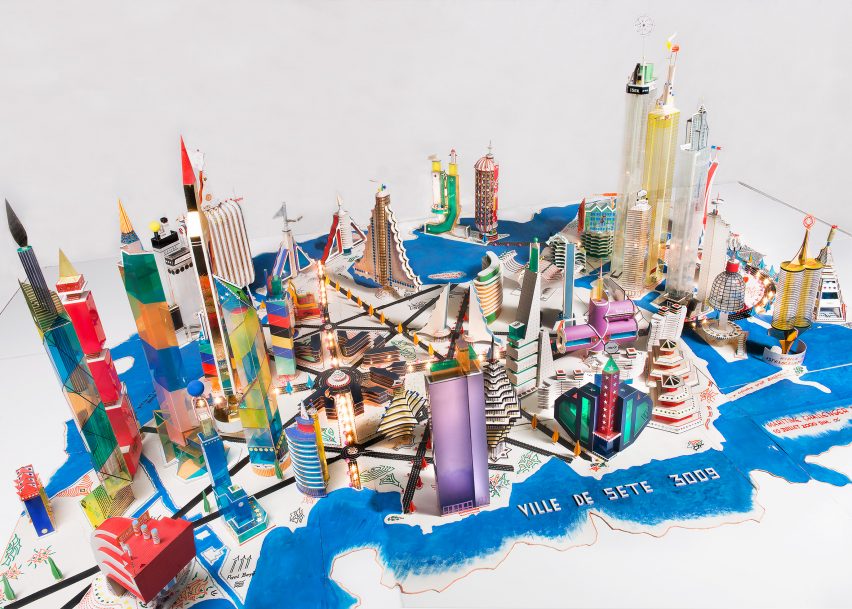
MoMA exhibits Bodys Isek Kingelez's fantastical models of African metropoles
New York's Museum of Modern Art is exhibiting the "extreme maquettes" of late Congolese sculptor Bodys Isek Kingelez, who modelled futuristic African cities with recycled cardboard, colourful paper and Coca-Cola cans.
Located on the museum's third floor, Bodys Isek Kingelez: City Dreams is the first US retrospective of work by the architect, sculptor and artist.
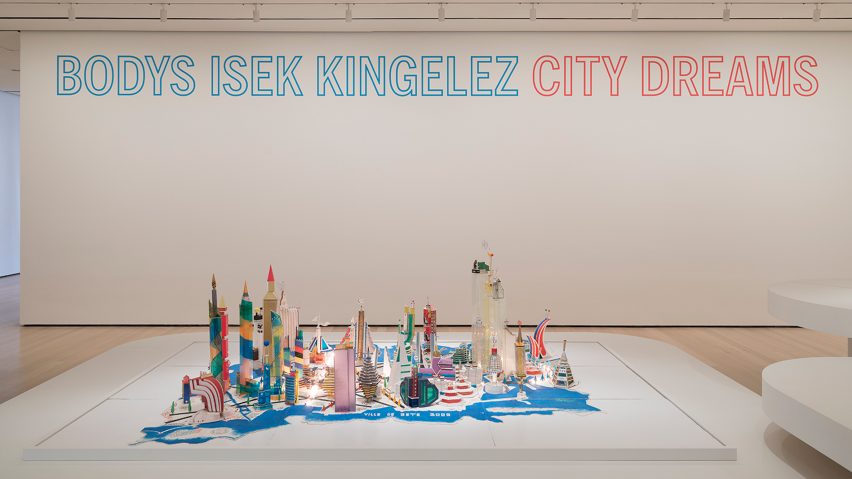
It displays his colourful craft-like models, made with simple materials like bottle caps, drinks cans, and leftover packaging, which depict his ambitions for the future built environment of Africa.
Kingelez was born in 1948 in what was then the Belgian-Congo, and began modelling his visions for the country and beyond after the region gained independence from Belgium in 1960.
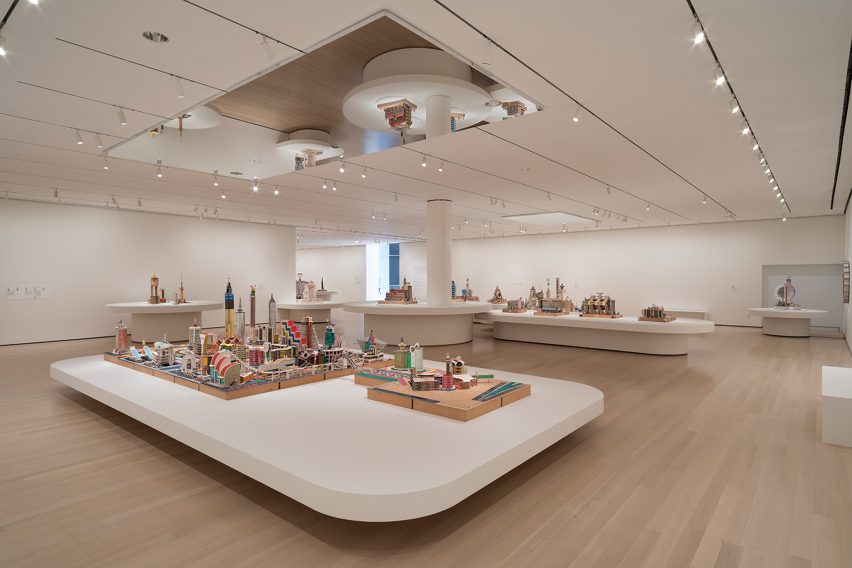
Starting with single buildings and then transitioning into sprawling, carnivalesque city complexes – which he described as "extreme maquettes" – the exhibition follows the trajectory of his career. The featured works are a selection from the hundreds of models he created between 1980 to 2007.
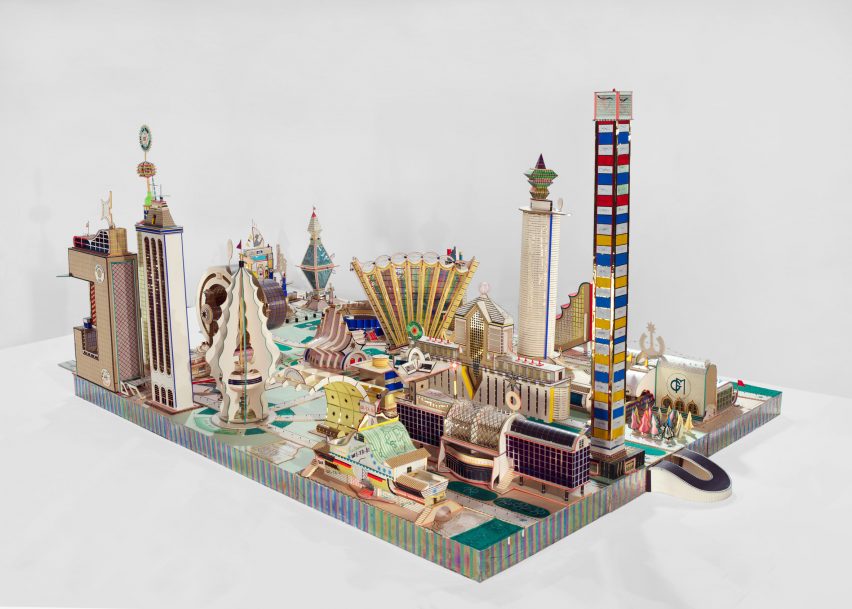
Among these is a trio of imaginary urban buildings displayed together, and completed successively in 1990, 1991 and 1992. They include Étoile Rouge Congolaise, designed as a court of wisdom focused on artwork and knowledge; Aéromode (Aéroport Moderne), a modern airport building; and Reveillon Fédéral, a democratic government building with a temple-like structure.
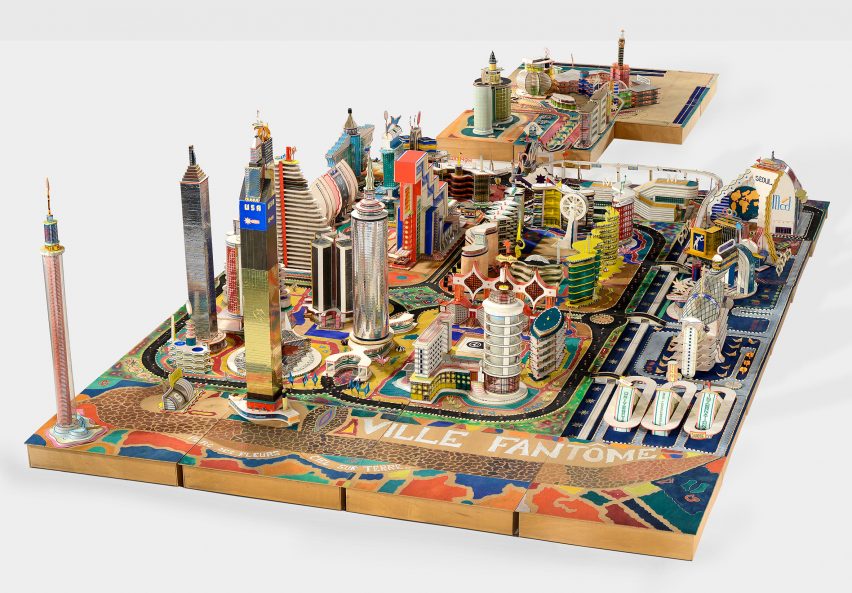
Kingelez created The Scientific Center of Hospitalisation the SIDA in 1991 in response to the AIDS epidemic, which was particularly widespread in Kinshasa – the capital of the Democratic Republic of the Congo, where the architect moved aged 22.
In contrast to typical hospital designs, the model of the medical centre shows plenty of colour.
Among his earliest works on show is the Approche de l'Échangeur de Limete Kin tower, created in 1981. It depicts the skyscraper that architect Olivier-Clément Cacoub was commissioned to design for Kinshasa in 1971.
Although it was never completed as designed, Cacoub's supertall Tour de l'Échangeur would have been the tallest on the continent and represents the grand architectural ambitions of the country's dictator, Mobutu Sese Seko.
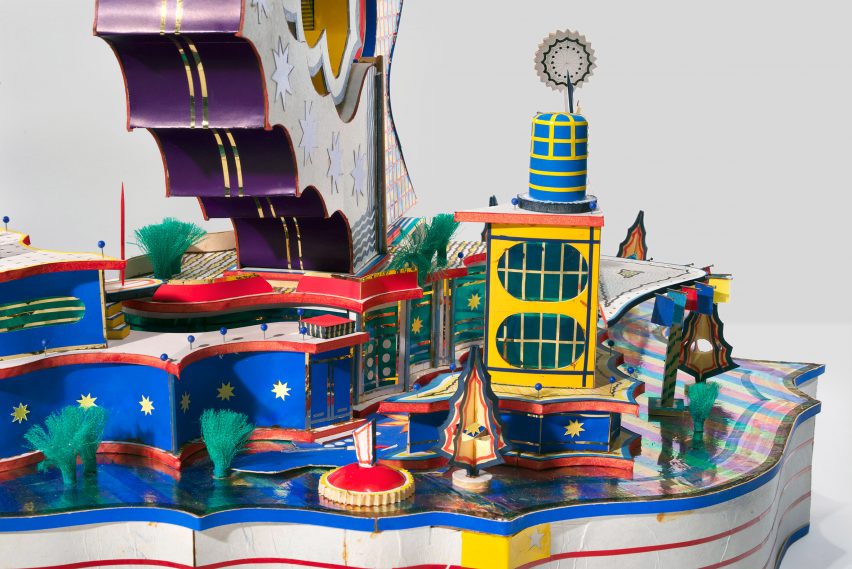
Dissatisfied with the outputs of Mobutu's city planning, Kingelez also created Kinshasa la Belle in 1991 as an alternative vision. In the model, blue paper brise-soleils detailed with pen offer decoration to the cylindrical building, with hut-like structures arranged around the top and pink paper trees at the base.
From 1992, Kingelez began his cityscapes, and named his first Kimbembele-Ihunga after the agricultural village where he grew up.
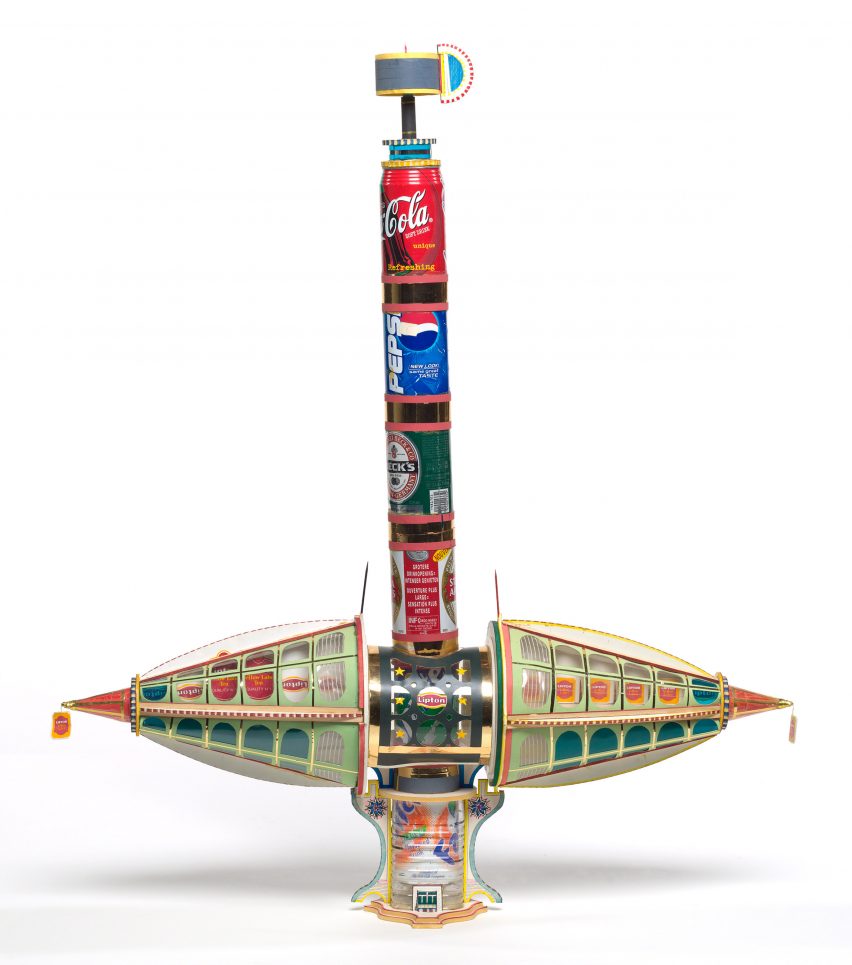
In contrast to his experience of the real place, the Kimbembele-Ihunga model imagines a busy metropolis filled with structures like colourful skyscrapers and fan-shaped buildings. His other standout city models include Ville Fantôme, where colourful card maps out the urban plan and city infrastructure, like a power plant, residences, a post offices – all built in variety of shapes.
Kingelez also created models for other cities, like the Stars Palme Bouygues for Paris, which features two huge, blue paper wing-like structures raised on a podium. Baubles are draped over the top, with a handwritten sign bearing the name of the structure.
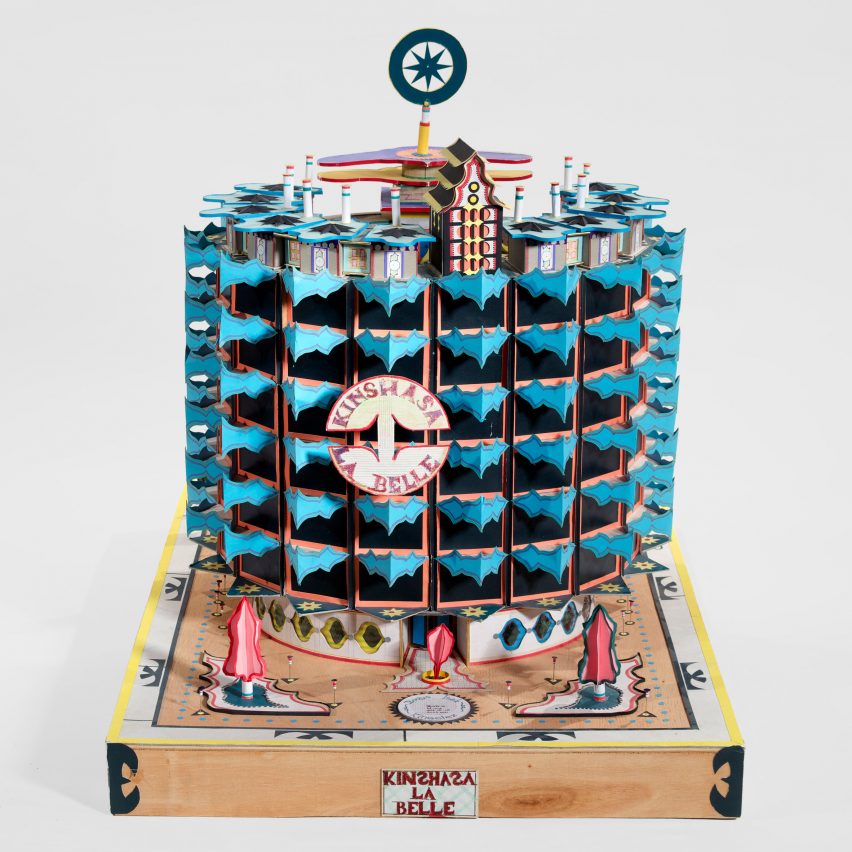
Sète – a city in the southern France – informed many aspects of his Ville de Sète, displayed towards the end of the exhibition.
Lit up by electric lights and reflected by a mirror placed above, the design contrasts real buildings – like the Hotel Azure – with Kingelez's creations, culminating in a set of translucent towers surrounded by water, and a highway in the centre.
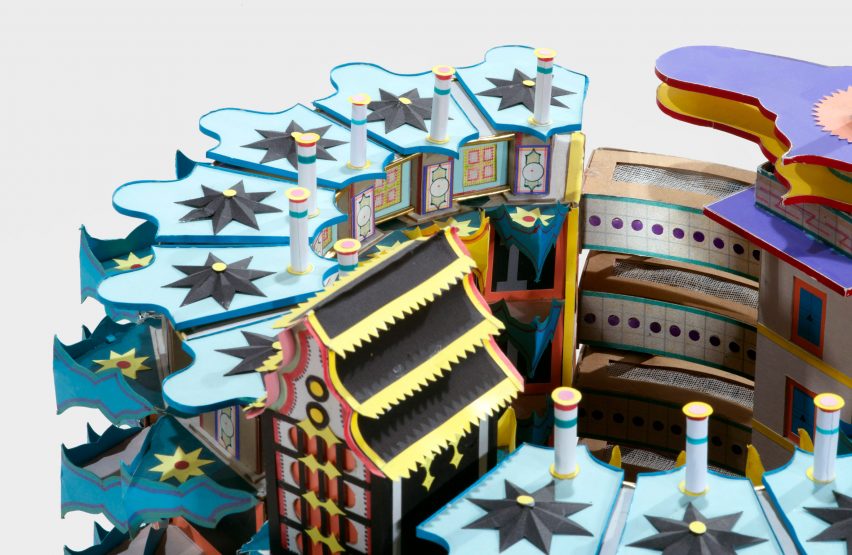
Kingelez's futuristic visions for Africa are not unlike those that have emerged through the Afrofuturist cultural movement, which combines African culture and identity with technology and science fiction.
Afrofuturism, which has recently become the buzzword for describing the continent's fast-growing creative scene, also influenced the design of the imaginary African city of Wakanada, which featured in recent blockbuster movie Black Panther.
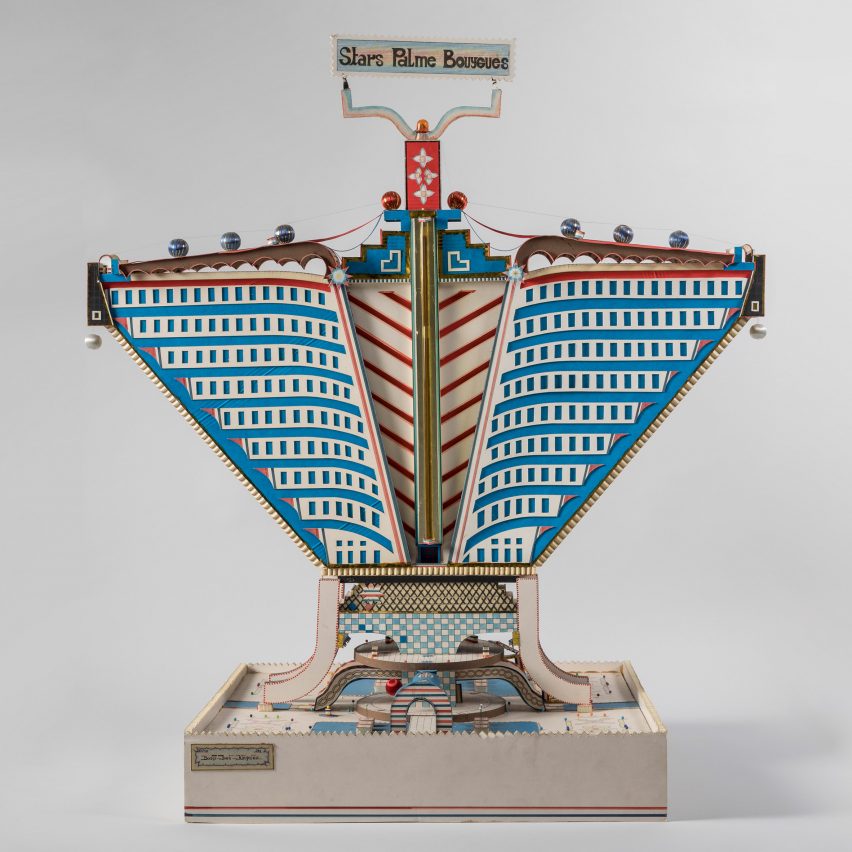
Bodys Isek Kingelez: City Dreams is the first major retrospective celebrating Kingelez, following his death in 2015 after a battle with cancer. His work has previously been shown in the Centre Georges Pompidou in Paris, and at the 2002 Documenta XI art exhibition in Kassel.
MoMA's exhibition, which is open until 1 January 2019, featured in Dezeen's top 10 must-see shows of 2018. Others include the London Design Museum's showcase of significant works by late couturier Azzedine Alaïa and The Met's Heavenly Bodies exhibition, which celebrates fashion influenced by Catholicism.